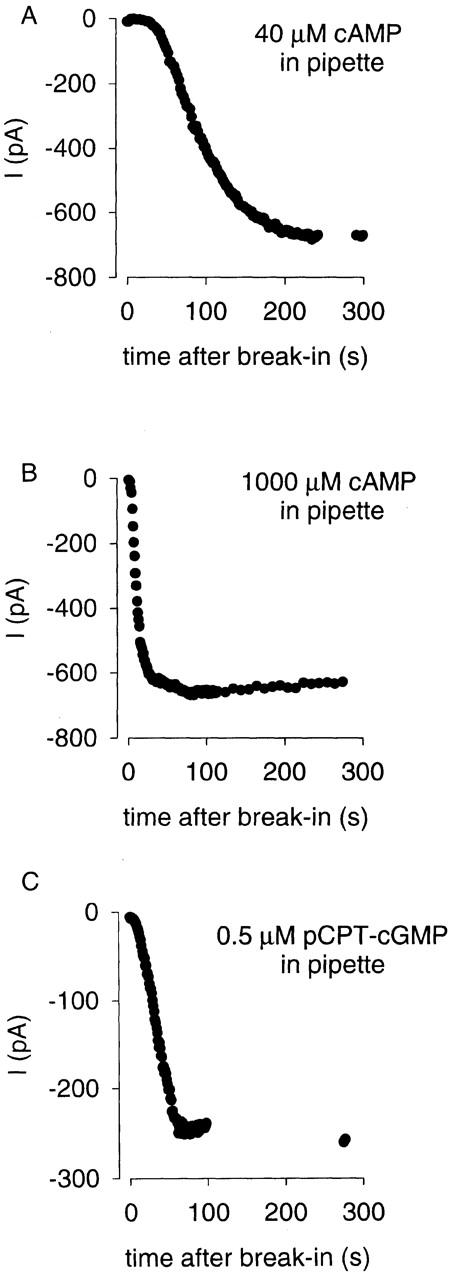Figure 8.

Response of oCNG channels to the wash-in of cyclic nucleotides from the pipette. Currents were measured during 100-ms steps to −50 mV from a holding potential of 0 mV. (A) Wash-in of 40 μM cAMP from the pipette solution. Initially there was a lag followed by a slow, multiexponential increase in current (in this experiment, the current reached 90% of the maximal current in 174 s). Other protocols were run during the brief gap in the data. The points following the gap clearly demonstrate that the current had indeed reached a plateau. (B) Wash-in of 1,000 μM cAMP from the patch pipette. Here the lag was very brief and the increase in current rapid (in this experiment, the current reached 90% of the maximal current in 28 s). (C) Wash-in of 0.5 μM 8-p-chlorophenylthio-cGMP from the patch pipette. Interestingly, there was only a small lag and the current increased quickly (in this experiment, the current reached 90% of its maximal value in 48 s). The points following the gap in the data (during which other protocols were run) demonstrate that the current had reached a steady plateau.
